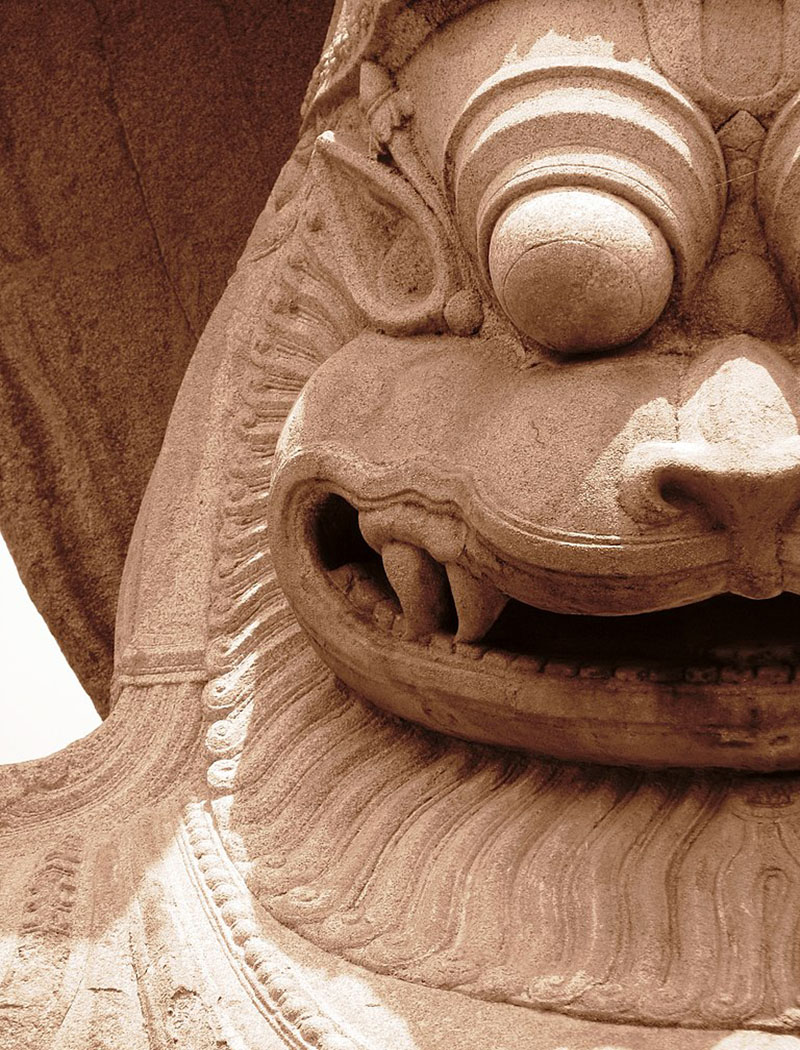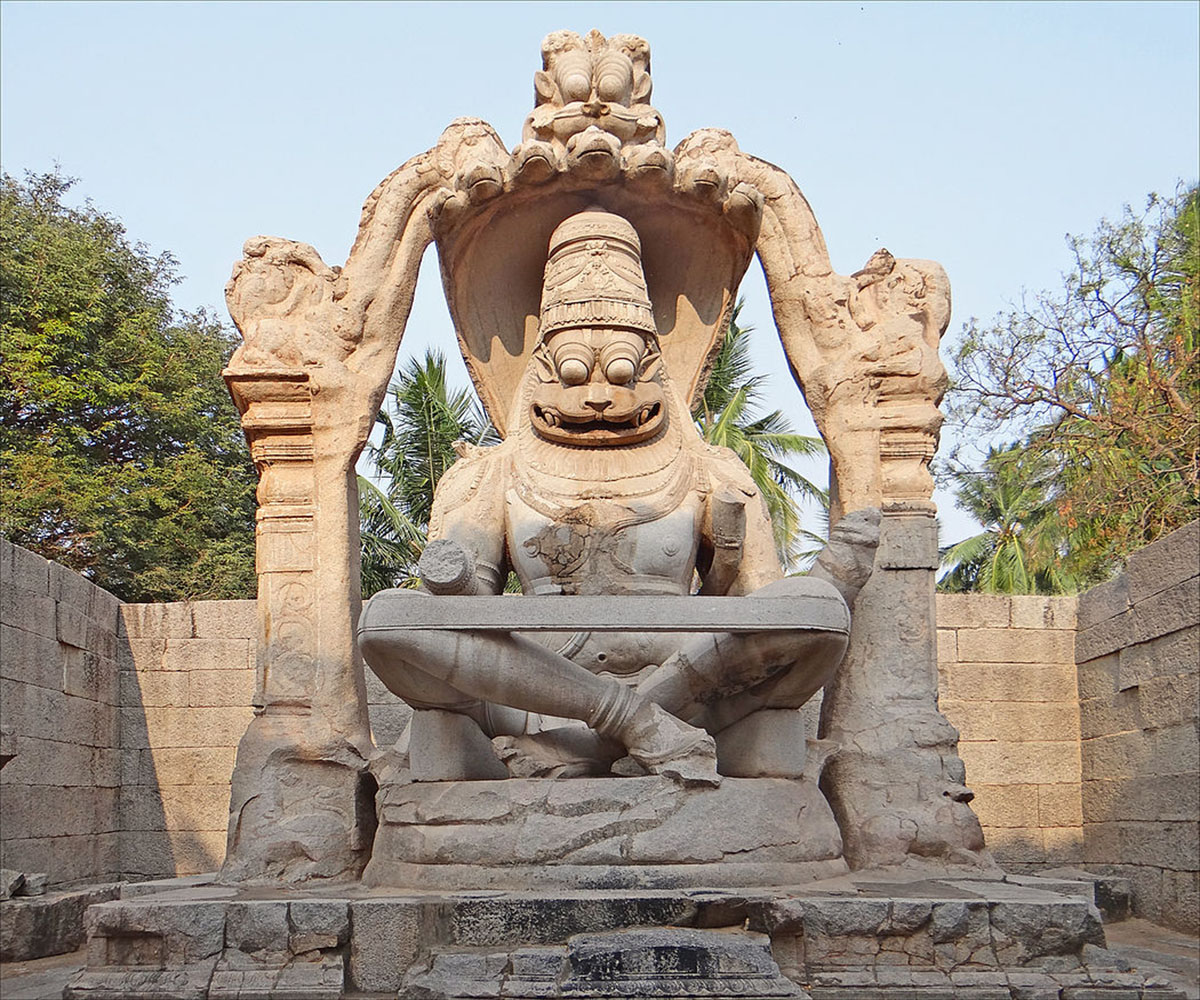ARTICLE
Ugra Narasimha Statue, Hampi
The defeat of Vijayanagara by an alliance of the Deccan Sultanates in 1565 led to a sack of the city, during which the structure was also harmed. Both knees of Narasimha, and the Lakshmi image seated atop them, were broken off. This has commonly been interpreted as an act of iconoclasm by Muslim rulers, a view that has been questioned by recent scholarship. It has been pointed out that a monumental statue of Ganesha near the Narasimha statue was left untouched by the attacking armies, suggesting that the vandalism of the Narasimha statue was driven by its association with the power of the Tuluva Dynasty, rather than primarily by religious considerations. Such politically-driven acts of violence were commonplace in the sixteenth century: the rulers of Vijayanagara, especially Krishnadevaraya, are attested to have done so during campaigns in Odisha and the northern Deccan.
Restoration attempts in the 1980s brought the figure back to a cross-legged position by adding in a pair of knees. A yogapatta band was also added, strapping the knees together. This addition has often led the image to be described as Yoga Narasimha, as a result of which the restoration remains controversial.
As of writing, the Ugra Narasimha statue continues to feature in debates over religious and political violence in the sixteenth century and remains a major tourist attraction at Hampi.
Bibliography
Our website is currently undergoing maintenance and re-design, due to which we have had to take down some of our bibliographies. While these will be re-published shortly, you can request references for specific articles by writing to hellomapacademy@map-india.org.








